THE GALLOPIN' GAUCHO (1928) Mickey Mouse & Minnie Mouse | Animation, Short, Comedy | B&W
The Gallopin' Gaucho is a 1928 American animated short film and the second short film featuring Mickey Mouse to be produced, following Plane Crazy and preceding Steamboat Willie. The Disney studios completed the silent version in August 1928, but did not release it in order to work on Steamboat Willie. It was released, with sound, after Steamboat Willie on December 30 of the same year.
Both Mickey and Minnie Mouse had already made their initial debuts with the test screening of Plane Crazy on May 15, 1928, but that film had failed to catch the attention of distributors when first produced as a silent film. The Gallopin' Gaucho was a second attempt at success by co-directors Walt Disney and Ub Iwerks. The latter also served as the sole animator for it.
Roy O. Disney wrote down the total budget of the short in his ledger book, which ended up costing $4,249.73, which was about $720 more than the costs of Plane Crazy's $3,528.50 budget.
As the title implies, the short was intended as a parody of Douglas Fairbanks's The Gaucho, a film first released on November 21, 1927. Following the original film, the events of the short take place in the Pampas of Argentina with Mickey cast as the gaucho of the title.
The short entered the US public domain on January 1, 2024.
SYNOPSIS
Mickey rides up to a cantina and does a tango with Minnie. When a big cat steals her away, Mickey gives chase, riding a drunken ostrich. At the hideout, Mickey has a swordfight with the cat.
Mickey is introduced riding on a rhea. He soon reaches local bar and restaurant Cantina Argentina. He enters the establishment with the apparent intent to relax with some drinking and smoking. On the wall, a wanted sign for Mickey saying El gaucho, meaning Mickey Mouse is a bandit or a crook.
Already present are resident barmaid and dancer Minnie Mouse and a fellow customer. The latter is Black Pete, who is introduced as a wanted outlaw.
Minnie performs the tango and salsa, and both customers start flirting with her. Pete then attempts to put an early ending to their emerging rivalry by proceeding in kidnapping her. He escapes on his donkey while Mickey gives chase on his rhea and soon catches up to his rival. Pete and Mickey then proceed in challenging each other to a sword duel.
CREW
Directed by Ub Iwerks
Produced by Walt Disney
Music by Carl Stalling
Animation by Ub Iwerks
Production company Walt Disney Studio
Distributed by Celebrity Productions
Cinephone (recorded)
Release dates August 2, 1928 (silent version), December 30, 1928 (sound version)
Running time 6 minutes
Country United States
Language English
NOTES
In later interviews, Iwerks would comment that Mickey as featured in The Gallopin' Gaucho was intended to be a swashbuckler, an adventurer modelled after Fairbanks himself.
Pete had already been established as an antagonist in both the Alice Comedies and the Oswald the Lucky Rabbit series, but this short marks his first encounter with either Mickey or Minnie. The latter pair also appears unfamiliar to each other. The short apparently depicts their initial encounter.
The feature characters of The Gallopin' Gaucho were obscure. When the cartoon starts, Mickey and Minnie have the same eyes as they have in Plane Crazy, but once Black Pete appears they suddenly have the dot eyes from Steamboat Willie. Mickey was at first thought to be much too similar to Oswald the Rabbit, which may have helped to explain the audience's apparent lack of interest in him. The mostly adult audience had become bored with what came to be called "rubber hose" animation. Disney would soon start to contemplate ways to distinguish the Mickey Mouse series from his previous work and that of his rivals. Minnie's role as performer and damsel in distress is solidified in this. It is also the first time she wears her distinctive oversized high-heeled pumps, although they fall off when she is kidnapped, and she spends the rest of the cartoon shoeless. Mickey is also seen wearing shoes for the first time, and as the years went by, animators would change Mickey Mouse. In the first three Mickey Mouse shorts, he is a character meant to appeal to adult sensibilities; he smokes, drinks, and cavorts. Soon after Walt and his animators revised their star (for the first, but not for the last time), after which Mickey Mouse became the "wholesome" character designed to appeal to children and to please the parent.
Reception
The Film Daily (January 6, 1929) said: "This features Mickey Mouse, the demon hero who has his ups and downs trying to rescue his sweetie who has been kidnapped by the villain Cat. In this one he takes a regular Doug Fairbanks part as a hard riding gaucho of the South American pampas. It is good burlesquing all the way, and the cartoon work of Walt Disney is clever in the extreme. It has some neat comedy effects through the addition of sound, which make the film far more enjoyable and laughable than it could possibly be in silent form."
-
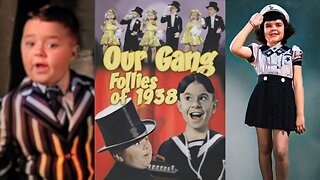 21:24
21:24
Lost n Found Films
5 days agoOUR GANG FOLLIES (1938) George McFarland, Carl Switzer, Darla Hood | Comedy | COLORIZED
22 -
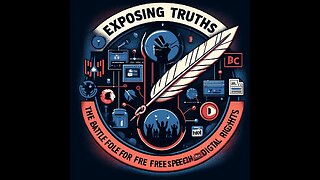 1:03:27
1:03:27
Talk Nerdy 2 Us
7 hours agoExposing Truths: Julian Assange's Battle and the TikTok Conspiracy
37.9K6 -
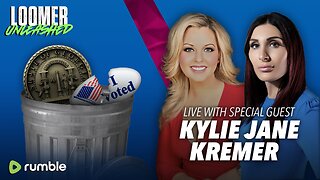 1:58:50
1:58:50
Laura Loomer
9 hours agoEP47: Georgia GOP Rocked With Anti-Trump Scandal Ahead of State RNC Convention
65.5K87 -
 2:20:49
2:20:49
Roseanne Barr
10 hours agoWe finally got Ryan Long!!!! | The Roseanne Barr Podcast #48
73K90 -
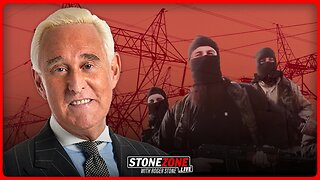 1:01:06
1:01:06
The StoneZONE with Roger Stone
12 hours agoWill Terrorists Take Down America's Power Grid? With Glenn Rhoades | The StoneZONE w/ Roger Stone
59K27 -
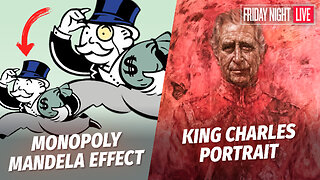 1:03:58
1:03:58
Edge of Wonder
12 hours agoAce Ventura: Mandela Detective, King Charles Portrait & Weird News
59.1K58 -
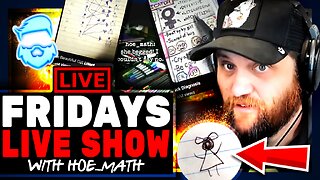 1:40:05
1:40:05
The Quartering
16 hours agoWhy Modern Women Suck w/Hoe_Math
89.1K53 -
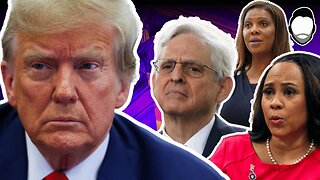 1:43:26
1:43:26
Robert Gouveia
12 hours agoGarland SHAKING over CONTEMPT; Congressional MELTDOWN; Fani RAGES at Senate; Tish INVESTIGATED
82.1K96 -
 1:48:05
1:48:05
2 MIKES LIVE
14 hours ago#67 2ML Open Mike Friday, we have a LOT to talk about!
48.2K6 -
 2:27:40
2:27:40
WeAreChange
13 hours agoIt’s NOT Just The Frogs — They’re Turning All The Animals GAY??
84.4K35